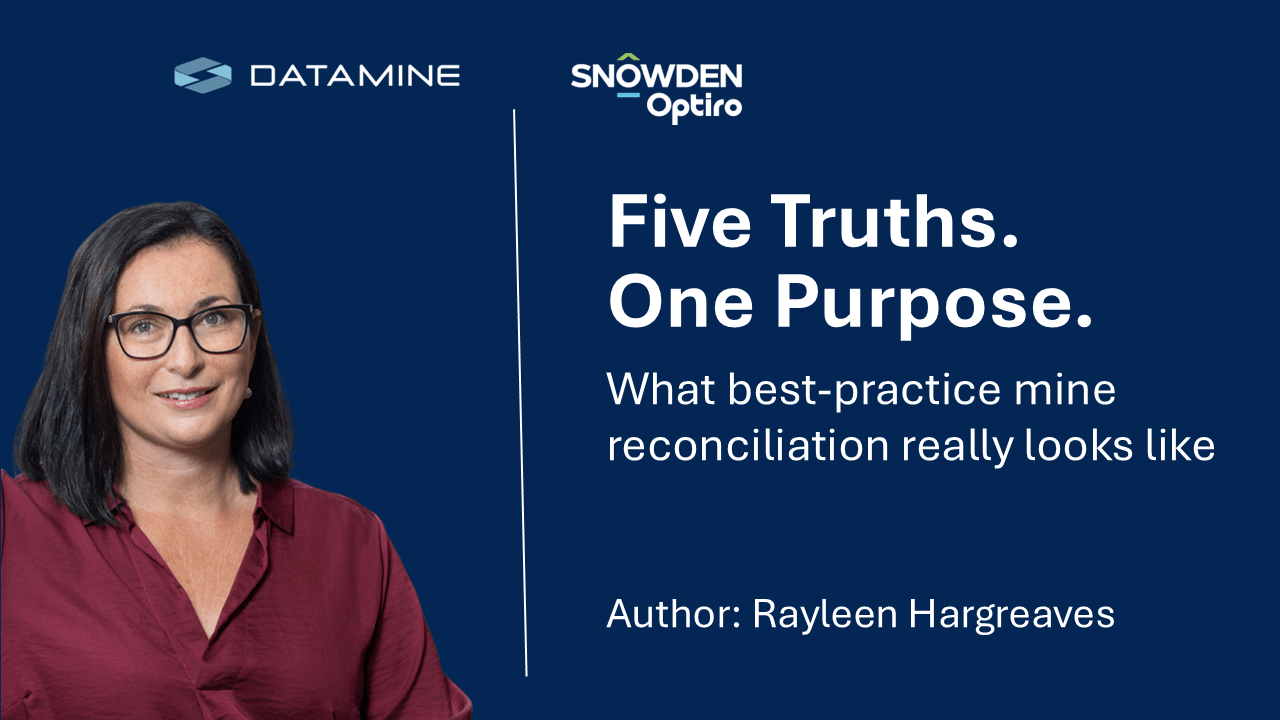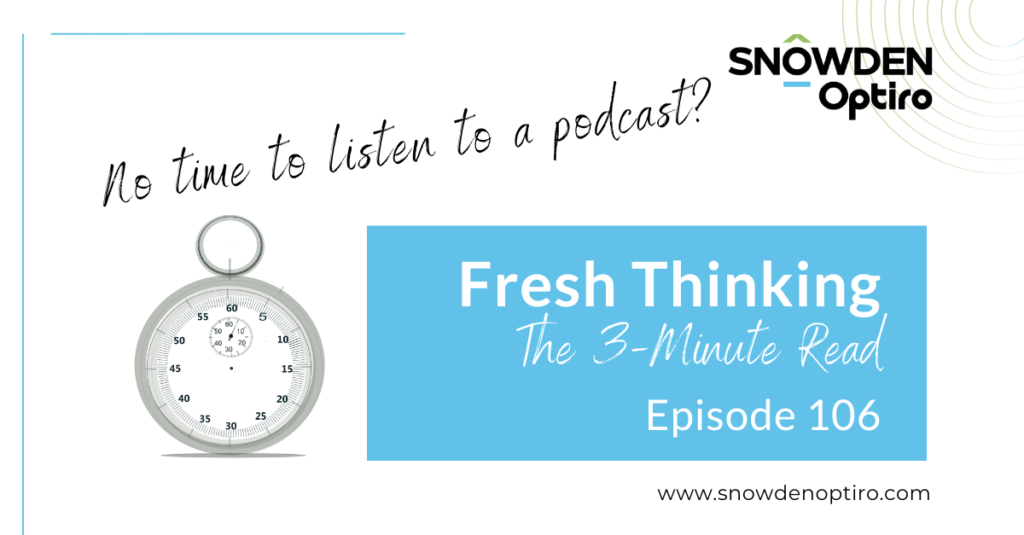


Here’s your 3-minute quick read of Fresh Thinking by Snowden Optiro’s podcast Episode 105.
We’ve pulled out the key insights and takeaways—perfect for when you want the value, minus the headphones.
Fresh Thinking Episode 106 – Part 1
By Ian Glacken and Graeme Lyall
In this first instalment of a two-part series, Executive Consultants Ian Glacken (Perth) and Graeme Lyall (Santiago) revisit the ever-relevant topic of mineral resource classification—offering a practical review of industry approaches, and where modern thinking is heading.
Resource classification frameworks across major jurisdictions—Australia, Canada, South Africa, the US, and others—are broadly aligned. The terms inferred, indicated, and measured are well understood. However, Ian and Graeme challenge us to think more deeply: once a block model is created, how should we actually apply classification categories in a meaningful way?
Spoiler: it’s not just about drill spacing.
A foundational idea behind this discussion is the 90-15 approach, a method pioneered by Harry Parker and colleagues. It hinges on classifying resources based on a 90% confidence interval with an acceptable ±15% error over a production period—typically quarterly for measured and annually for indicated resources. This approach ensures consistency with production expectations, particularly at feasibility stages.
A common pitfall when applying classification algorithms is the so-called “spotted dog” outcome: patchy, impractical maps of resource categories that don’t reflect real mining scenarios. Ian and Graeme stress the importance of post-processing and smoothing to create usable classification outcomes.
While drill spacing remains a standard input, Graeme explains a more rigorous method for assessing it:
This simple-yet-effective geometric method avoids irregularities and better aligns classification volumes with reality.
Graeme also walks through the limitations of other methods like kriging variance, which tends to produce unrealistic “tubes” around drillholes. In contrast, the “three nearest drillholes” method provides a cleaner starting point that often requires less correction.
Graeme introduces another approach developed with Harry Parker: the two-indicator method, which estimates both tonnage (presence above cut-off) and metal content using composite samples. These variables are used to calculate confidence intervals on large production units, forming the basis for classification.
This method works especially well for large porphyry or IOCG-style deposits. But, as both Ian and Graeme note, it’s not universal. Deposits like lateritic nickel, iron ore, or structurally controlled gold may need different classification techniques, including geostatistical simulation or more geology-driven models.
Resource classification is never one-size-fits-all. Whether you’re using equivalent grid spacing or the two-indicator method, it’s vital to:
Stay tuned for Part 2, where Ian and Graeme explore the scorecard approach, simulation-based methods, and practical examples of classification refinement.
CONTACT
If you would like to contact either Ian or Graeme: contact@snowdenoptiro.com
Missed the episode? Catch the full conversation here: Watch on YouTube from the Snowden Optiro team.
Here is a LINK to our Snowden Optiro YouTube channel.


Subscribe here for our podcasts, technical articles and news
